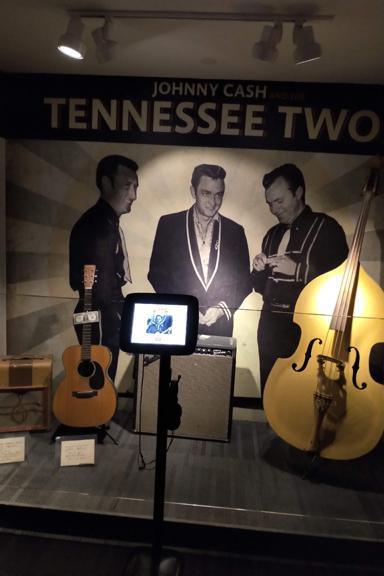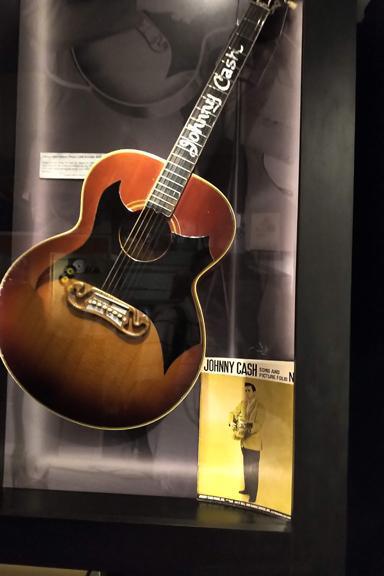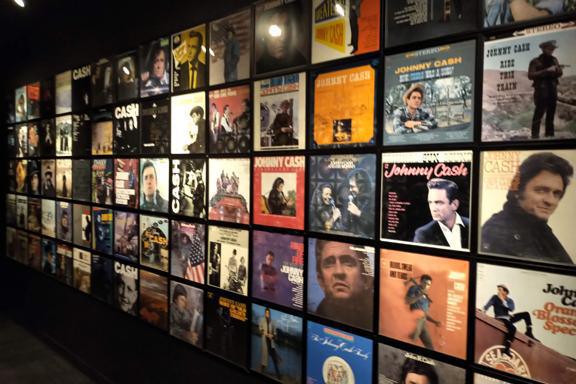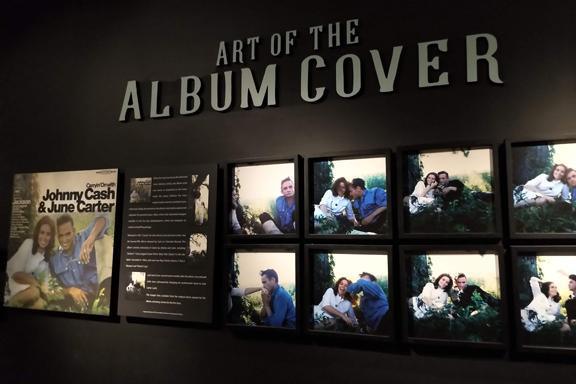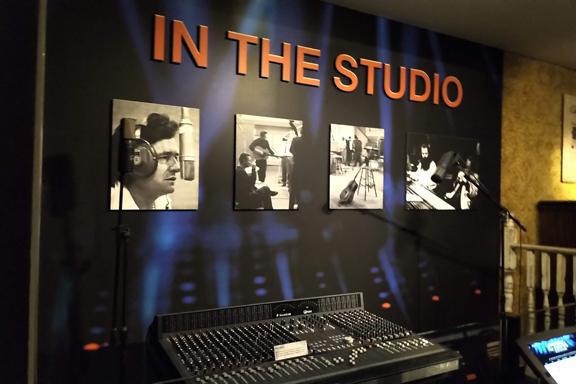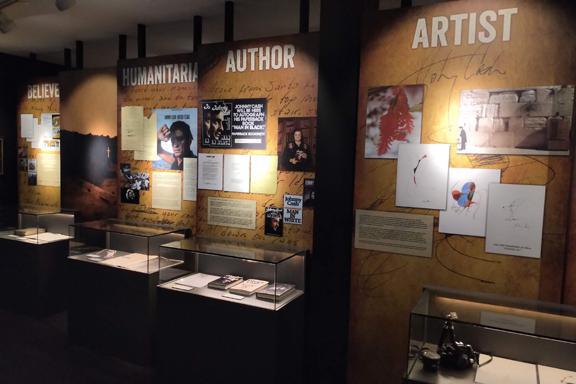Howdy, folks, let me tell you about my recent trip to Nashville, Tenn.
Country music is practically woven into the very fabric of that city, and I, being a lifelong fan, knew I had to make a pilgrimage to one particular place: the Johnny Cash Museum. (Coincidentally, it was right across the street from my hotel. Seriously a coincidence. Fate maybe.)
I'd heard whispers, seen snippets online, but nothing prepared me for the sheer emotional weight and historical significance packed within those walls.
Now, I consider myself a pretty big Johnny Cash fan. I grew up listening to my dad's old records, the crackling vinyl filled with tales of hardship, redemption and rebellious spirits. But walking (the line) through the doors of the museum, I realized I was about to be schooled. This wasn't just a collection of memorabilia; it was a carefully curated journey through the life and times of the Man in Black.
First impressions matter and the museum doesn't disappoint. It's located right in the heart of downtown Nashville, easily accessible and surrounded by the vibrant energy of the city. The exterior is unassuming, almost understated, which I found fitting. Johnny Cash never needed flashy theatrics; his music and his presence spoke for themselves.
Stepping inside, I was immediately greeted by a timeline of Cash's life, stretching from his humble beginnings to his legendary status as a global icon. This wasn't just dates and facts; it was a story unfolding before my eyes. I learned about his childhood working in the cotton fields, the tragic loss of his brother and the first stirrings of his musical talent. It was a stark reminder of the hardship and resilience that shaped him into the man he became.
The museum is organized chronologically, leading you through different phases of Cash's life and career. Each section is filled with an astonishing array of artifacts. We're talking handwritten letters, stage costumes, instruments, personal photographs and even his high school yearbook. I found myself lingering over each display, soaking in the details and trying to imagine the story behind each item.
One of the first things that struck me was the sheer volume of handwritten lyrics. It was incredible to see the raw, unfiltered thoughts of a songwriting genius laid bare. Scrawled on scraps of paper, napkins and hotel stationery, these lyrics offered a glimpse into his creative process. You could almost hear the music taking shape in his mind. I was particularly captivated by the drafts of "Ring of Fire," co-written with June Carter. Seeing the evolution of that iconic song was truly special.
Speaking of June, her presence is felt throughout the museum. The love story between Johnny and June is legendary, and the museum doesn't shy away from showcasing their deep connection. There are letters they wrote to each other, photographs of them together and even a recreation of their Hendersonville home's living room, complete with their beloved furniture. It was incredibly touching to see the intimate details of their life together, a testament to their enduring love and partnership.
Beyond the personal artifacts, the museum delves into Cash's musical career (of course). There are guitars he played on stage, including his signature Martin D-28, its finish worn down from years of passionate performances. There are stage costumes, including the iconic all-black suit that earned him the moniker "The Man in Black." (The visit was set up in connection with our parent company's media broadcasts so we had an "in" with a personal tour guide but I didn't have any luck trying on an a Cash outfit. Some strings we just can't pull. Dammit!) I was fascinated by the evolution of his style, from the early Sun Records days to the later American Recordings era.
One section of the museum is dedicated to Cash's legendary prison concerts. Photos and videos document his performances at Folsom Prison and San Quentin, capturing the raw energy and emotional connection he forged with the inmates. These concerts were a turning point in his career, solidifying his image as a champion of the underdog and a voice for the marginalized. Standing there, surrounded by the images and sounds of those performances, I felt a profound sense of respect for Cash's commitment to social justice.
The museum also explores Cash's struggles with addiction and his eventual redemption. Letters from fans offering support and encouragement are displayed alongside personal accounts of his battles. It's a powerful reminder that even the most iconic figures are not immune to human struggles. Cash's willingness to be open about his flaws and vulnerabilities is one of the things that made him so relatable and beloved.
As I moved through the museum, I noticed the diverse range of visitors. There were die-hard fans like myself, young people discovering Cash's music for the first time and families spanning generations. It was clear that Cash's music transcends age, background and genre. He was a true cultural icon, and his legacy continues to resonate with people from all walks of life.
By the end of my visit, I felt like I had a much deeper understanding of Johnny Cash, the man and the artist. The museum is more than just a collection of artifacts; it's a carefully crafted narrative that tells the story of his life with honesty, respect and passion. It's a place to celebrate his music, to reflect on his struggles and to honor his enduring legacy.
So, if you're a fan of Johnny Cash, or even just a fan of good music and compelling storytelling, I highly recommend a visit to the Johnny Cash Museum in Nashville. It's an experience you won't soon forget. It's a chance to walk the line, to feel the fire, and to understand the enduring power of the Man in Black. Just be prepared to be moved, to be inspired, and to leave with a renewed appreciation for one of the greatest artists of all time. You might even find yourself humming "Ring of Fire" for days afterward! Trust me, it's worth it.

